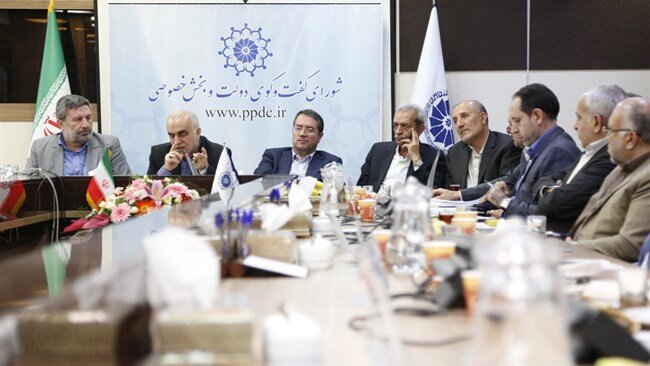Govt., private sector discuss amending CBI directive on re-injection of export income

TEHRAN - The 86th Dialogue Council of the Government and the Private sector was held in Tehran on Tuesday to discuss issues pertain to foreign trade and currency market, the portal of Iran Chamber of Commerce, Industries, Mines and Agriculture (ICCIMA) reported.
In the meeting, which was chaired by Iran’s Finance and Economic Affairs Minister Farhad Dejpasand, the government policies for re-injection of export income into the country’s economy were discussed and it was decided that a committees comprised of the private sector, the central bank, and the ministry of industry, mining and trade and the ministry of finance, would be established to follow and finalize the directive issued in this regard.
In late May, Central Bank of Iran (CBI) unveiled a directive package which provided the country’s exporters with guidelines about how they should re-inject their foreign currency incomes into the country’s economy.
However soon after its issuance, the new directive aroused some debates in the country’s private sector and the traders and businessmen claimed that it needed to be amended.
According to economic experts and businessmen, the directive didn’t take into account serious obstacles in the way of transferring foreign currency into the country considering U.S. sanctions and lack of banking relations with other countries.
They also claim that it ignored certain trade conditions, especially regarding relations with countries such as Iraq and Afghanistan.
Based on the latest edition of the CBI directive, for the petrochemical sector, the exporters were obliged to present at least 60 percent of their foreign currency incomes into the domestic Forex Management Integrated System (locally known as NIMA), and a maximum 10 percent could be injected into the financial system in the form of hard currency and the rest could be used for importing necessary goods.
As for other exporters, at least 50 percent of the total earnings should be presented at the NIMA system and a maximum 20 percent could be distributed in form of hard currency and the rest can be used for imports.
However, given the restrictions imposed by the sanctions, Iranian traders are still not able to comply with this model and suggest that an exchange method be applied which considers the types of commodities, the foreign currency of the destination markets and the destination country itself.
EF/MA
Leave a Comment